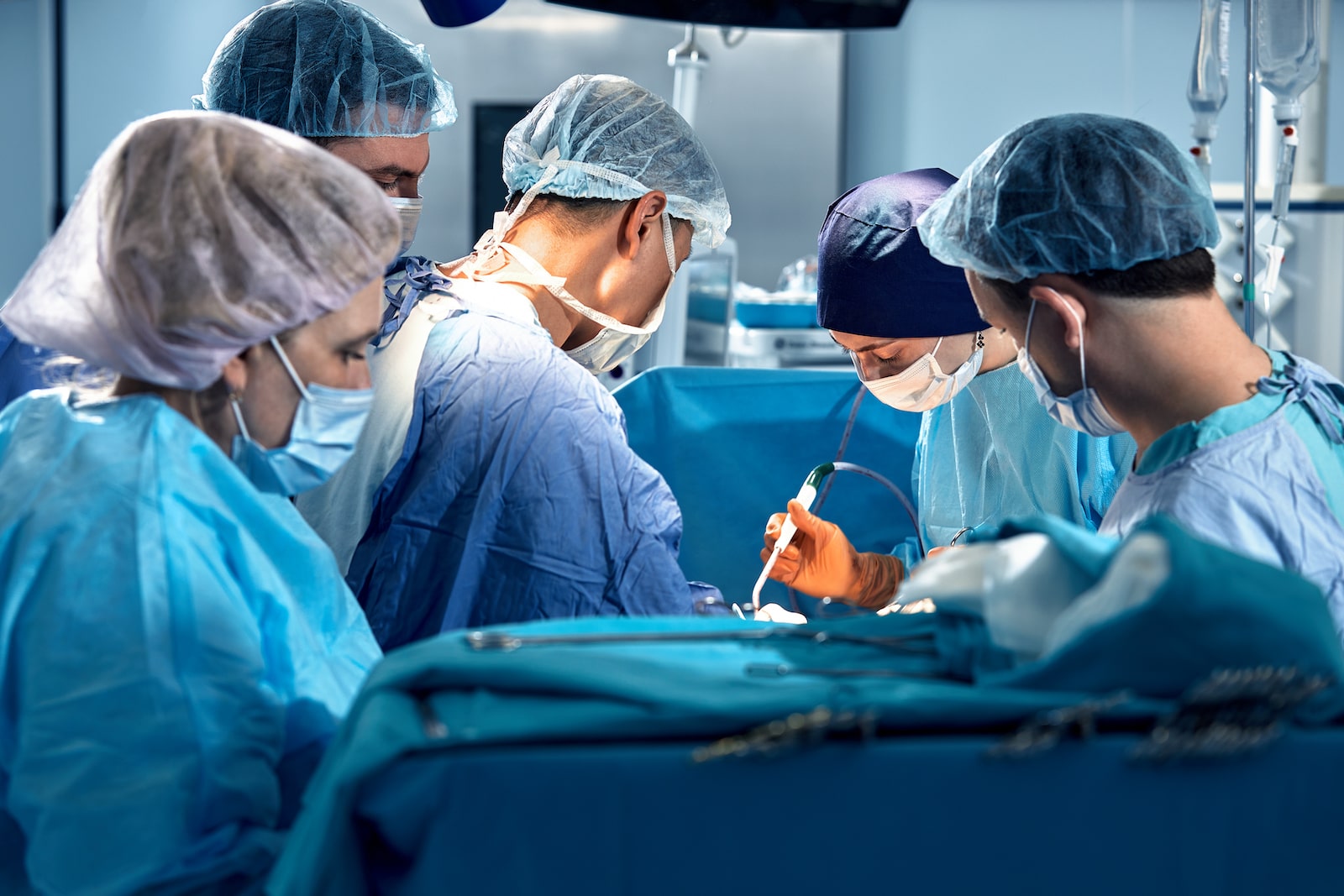
Artificial disc replacement is a surgical procedure that removes damaged and worn-out spinal discs and replaces them with artificial ones. These prosthetic discs work just like the natural ones found in the human body. They also allow patients to preserve their range of motion and resume their favorite activities at a greater rate compared to spinal fusion, which simply removes the damaged disc and fuses two vertebrae.
Overall, disc replacement is considered a safe procedure. Up to 93.3% of patients say they are satisfied with the results and the operation’s impact on their lives. Today’s surgeons continuously work to develop new techniques and adopt modern technology that makes this procedure safe and effective.
If you experience back pain, it’s understandable that you would have safety concerns about disc replacement surgery. However, you are in good hands as long as you work with a trusted spinal neurosurgeon like Dr. Todd H Lanman. Learn more about the operation to learn whether it is right for you.
Evaluating Disc Replacement Safety
People from all walks of life can potentially benefit from disc replacement surgery. This procedure is popular with American athletes who complain of back pain but need to get back on the field. In one study, 50% of athletes were able to resume playing within three months of the operation, while 72% returned within six months. Up to 65% of athletes were able to resume their same playing levels.
Of course, you don’t have to be a professional athlete to enjoy the benefits of disc replacement surgery. This data simply highlights the mobility and comfort that patients experience after the recovery process is complete.
While disc replacement is a safe procedure, every operation comes with potential complications. The risk of infection at the incision site is low, but never zero. Your body also might reject the prosthetic disc, making you a candidate for reoperation. Fortunately, Dr. Lanman and his expert medical team will do their best to mitigate these risks so you can recover and feel your best.
Disc replacement is viewed as a modern alternative to spinal fusion, which doesn’t preserve your mobility as well, comes with a longer recovery time, and has higher risks due to the invasive nature of the operation. While fusion might be a better option for some patients, doctors are increasingly recommending disc replacement instead.
Surgical Risks and Complications
Every operation comes with several steps and potential complications within them. This is because the procedure itself is only the first part. The patient also needs to recover from the surgery and take steps to restore their range of motion through physical therapy. Here are a few potential risks to look out for and how both Dr. Lanman and you as the patient can mitigate them.
Intraoperative Risks
Intraoperative risks are complications that occur during surgery. While Dr. Lanman and his team carefully monitor the patient throughout the operation, problems can occur. With disc replacement, patients might experience nerve damage, spinal cord injury, blood vessel injury that leads to significant blood loss, and anesthesia-related complications however all are extremely rare.
To mitigate these risks, Dr. Lanman embraces techniques that protect the nerves and spinal cords of patients. He is more likely to make the incision in the neck for a cervical disc replacement or in the front abdomen for a lumbar disc replacement. This allows him to avoid the spinal cord altogether and potentially improve the recovery process.
Intraoperative risks with disc replacement are low. The death rate is 0% and the most common serious complication – a dural tear in the spinal cord – only occurred in 8 out of 1,000 cases.
Postoperative Complications
Once Dr. Lanman completes the operation and clears you to return home, you can start the postoperative healing process. Complications can arise during this time depending on the body’s reaction to the operation and whether the patient follows the rest and recovery guidelines.
Patients can potentially experience an infection at the incision site if they aren’t careful to keep it clean. The implant could get dislocated and fall out of place. Additionally, patients might experience high pain levels if they try to do too much before they have recovered.
Two weeks after the procedure, you will meet with Dr. Lanman to make sure you are recovering well. Patients are asked to avoid driving, lifting more than 30 pounds, or participating in exercise for three weeks following this procedure. The entire recovery process takes about three months. Allowing your body to heal after the operation can increase your chances of long-term success.
Long-term Risks
In the months following disc replacement surgery, you should start to notice lower pain levels and increased mobility. Dr. Lanman will show you some physical therapy exercises to help your spine or connect with a PT expert to guide you through the healing process. However, there are still risks to your spinal health that could develop in the years following your operation.
Artificial spinal discs will last an average of 70 years and can last more than 100 years in some cases. For most patients, these discs are permanent and will not need to be replaced. However, there’s a chance that the discs could degrade, and in those cases, additional surgery may be required.
Even after your surgery, Dr. Lanman will continue to monitor your case and be available to you if you notice any increase in back pain following your operation.
Disc Prosthesis And Allergic Reactions
Today’s artificial discs are made with similar materials used in other implants. There are different metal options and discs that use a mixture of metal and plastic to support patients. All of these materials are safe for human implants. Allergic reactions are rare, so you can feel confident that your artificial disc is supporting your body, not harming it.
When you meet with Dr. Lanman, he will review any sensitivities or allergies you have and may do a blood test to assess for metal allergy. This can help him choose the best artificial disc for your needs.
Advances in Disc Replacement Technology
The FDA only approved artificial discs for replacement surgery in 2024, which makes this a relatively new procedure. However, the field of disc replacement continues to evolve as more researchers and spinal neurosurgeons invest in it. Here are a few advances in disc replacement that highlight how far it has come:
- More doctors are recommending spinal disc replacement surgery, with some institutes completing more than 3,000 disc replacements since this procedure was first adopted.
- Surgeons can treat more complicated cases. Dr. Lanman completed the first three-level disc replacement in 2010 which addressed multiple damaged discs in a single operation.
- Improvements in technology allow for more patients to receive this operation. The three-level patient that Drs. Lanman and Cuellar helped was 76 at the time of surgery.
- Additional disc replacement designs are more flexible and natural, allowing for an improved range of motion.
These advancements highlight how more patients can receive disc replacement surgery as the practice becomes more common and more research and training resources are developed.
Why Choose Dr. Lanman
Dr. Lanman has been a leader in disc replacement surgery since it was first developed. He completed his residency in 1989 in Neurological Surgery at the University of California at Los Angeles. Since then, he has dedicated his life to helping patients with back pain and continues to look for better treatments and solutions to support the recovery processes. He has published multiple peer-reviewed articles and served as a principal for several clinical trials. Dr. Lanman is continuously embracing – and helping to develop – new technology and advancements in spinal surgery.
Patient Selection and Preoperative Considerations
Artificial disc replacement has a high success rate because doctors are careful to select patients who have a high chance of a full recovery. When you meet with Dr. Lanman, he will not rush to recommend surgery. Instead, he will work to understand your pain levels and develop a comprehensive treatment plan. Here are a few steps in that process:
- Patient history: Dr. Lanman will get to know you, your lifestyle, and what you do for work. This can indicate the source of the wear and potential barriers to recovery.
- Accurate diagnoses: Dr. Lanman will request imaging tests to get a clear picture of your spine to identify the source of the issue.
- Non-surgical options: Dr. Lanman will encourage you to try non-invasive treatments first to see how your body responds.
- Health evaluation: if you are a candidate for surgery, Dr. Lanman will make sure you are in good health and able to handle the recovery process.
By the time a patient checks in for disc replacement surgery, Dr. Lanman has a clear picture of their health history and spinal condition. He can work to address the issue and develop a recovery plan.
Comparing Safety with Alternative Treatments
Artificial disc replacement is a low-risk operation compared to alternative treatments like spinal fusion. With fusion, doctors need to make at least a two-inch incision if not a six-inch incision to get to the spine. This increases your chances of losing blood and potentially developing an infection. Universal data shows that ADR complications are ½ that of fusion.
That said, there are times when you might need both disc replacement and fusion. Dr. Lanman is an example of this. He is known as a hybrid case because he has three artificial discs in his lower back, a disc in his neck, as well as fusion in his lower spine. This is another reason why Dr. Lanman is a top spinal neurosurgeon to work with: he has personally been through these operations and the recovery processes.
Contact Dr. Lanman for a Consultation Today
Artificial disc replacement continues to be a better alternative to spinal fusion and a safe procedure overall. While risks and complications are always a possibility, you can feel confident that you are safe in Dr. Lanman’s skilled and experienced hands.
Dr. Lanman is committed to helping patients determine the best approach for their specific condition and develops individual care plans for each person who meets with him. He can help you make informed decisions about your path forward and can give you the best possible options to live a mobile, pain-free life.
Contact Dr. Lanman to schedule a consultation about your back pain or use the Top Doctors Directory to find an equally-qualified spinal professional who is recommended by Dr Lanman near you.
FAQs:
What is the success rate of total disc replacement surgery?
Success rates for total disc replacement vary from one study to the next. However, one study collected data on 946 patients across various publications and found success rates ranged from up to 93.3%. These are positive results for this type of operation.
Who is not a good candidate for disc replacement?
Expert surgeons will carefully review patient data to evaluate whether you are a good candidate for surgery. However, disc replacement usually isn’t recommended for people who are in poor health, obese, or who smoke. Your doctor might want to treat existing conditions first before moving on to disc replacement surgery.
Can you live a normal life after a disc replacement?
Yes. One of the main benefits of disc replacement surgery over spinal fusion is that it preserves your mobility. Many professional athletes choose this operation when they experience back pain so they can return to the field within a few months. Every patient is different, but many live active, pain-free lives after disc replacement.
How painful is artificial disc replacement?
Every person has unique levels of pain tolerance and discomfort. Experiencing pain in the weeks following your disc replacement is normal, but it normally resolves as your body heals. Many patients who live with back pain go on to say the procedure provides long-term relief from their pain and symptoms.
How risky is disc replacement surgery?
Today’s surgeons work carefully to mitigate the risk that comes with disc replacement surgery. They use small incisions and work quickly to complete the procedures within an hour or two. While every operation comes with some risk, artificial disc replacement is considered a safe operation, especially when working with a skilled and experienced surgeon like Dr. Lanman and the surgeons in his ADR Spine Top Doctors in Arthroplasty Program, which connect patients with the most skilled and experienced artificial disc replacement surgeons in their area.
Ready to reclaim your life? Get in touch with Dr. Lanman Today.
FOLLOW US ON SOCIAL MEDIA | @ADRSPINE




